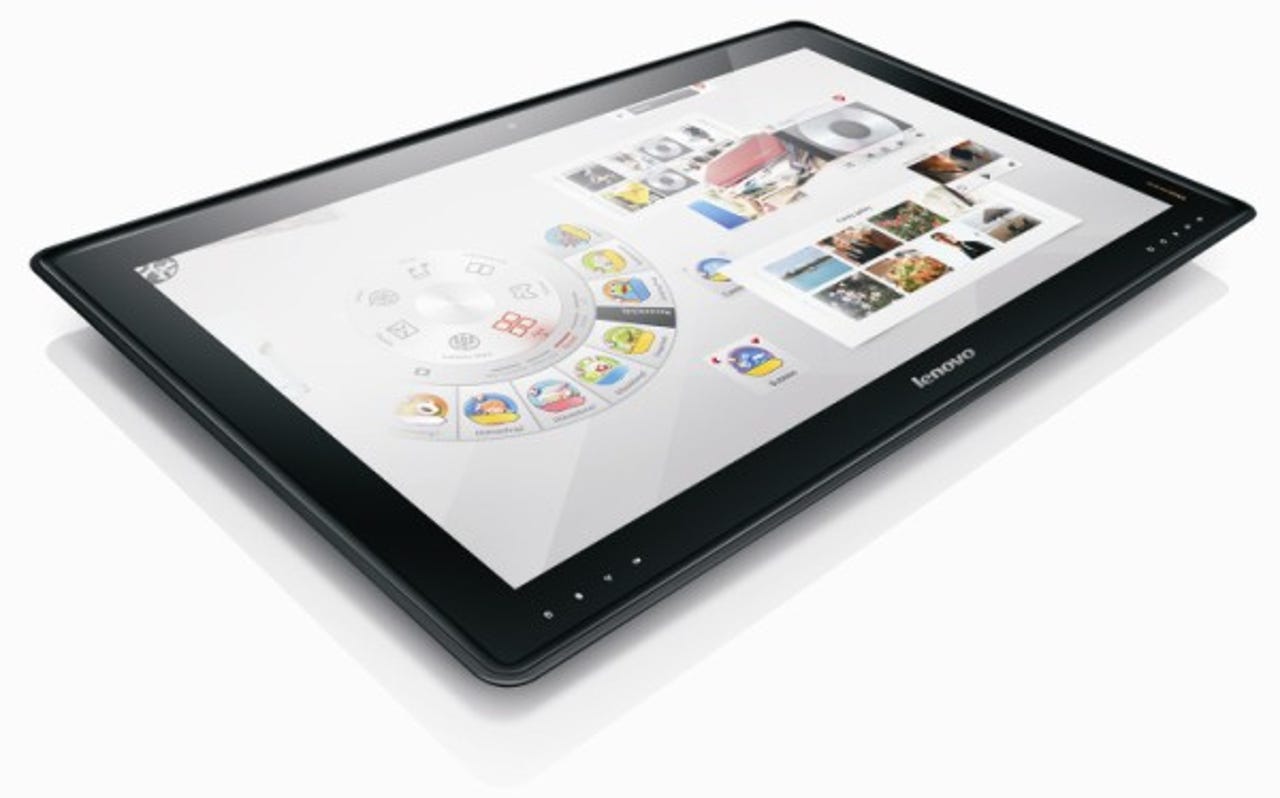CES 2013: The coming of Windows 8 'table PCs' and supertablets

Microsoft's original Surface — a computer in coffee table format — attracted a lot of interest but not many sales. That could change thanks to new Windows 8 touch-screen all-in-one PCs that can be used in either a vertical or horizontal format. Screens are smaller than the 40-inch Surface, which has been renamed Pixelsense. However, while aimed mainly at home users, they are still large enough for many of the same business purposes as the Surface. This includes interactive displays for product selection for financial services, shopping, and casino-style gaming.

China's Lenovo made the boldest introductions at CES2013 with the IdeaCentre Horizon Table PC, which it described as its first "interpersonal PC" because it can provide a shared computing experience. It can be used in vertical mode as a desktop/all-in-one computer or horizontally for shared browsing or multi-user gaming. It's heavy at 7.7kg, but Lenovo's video shows it can be moved around, and it has enough battery to run for a couple of hours without a mains connection.
Lenovo's first Horizon Table PC has a 27-inch screen and will be available in early summer for "approximately $1,699".
Lenovo also showed a 39-inch version code-named Gamma, which is only an inch smaller than the current Pixelsense SUR40. Lenovo said: "While still an early concept, Gamma illustrates the outstanding multi-user entertainment experiences such a large screen can provide and is indicative of Lenovo's future direction in Table PC computing."
Sony entered this market in December with the launch of the Vaio Tap 20, a touch-screen all-in-one that includes a built-in battery. The 20-inch screen can be set at any angle from 15 to 90 degrees, or it can be used flat on a table. Someone who is willing to heft the 5.2kg weight could also carry it around as a tablet. Not many home users will want to hit the streets with a Vaio Tap 20, but it would easily fit the back of a salesman's car. The starting price of £999 in the UK certainly makes it affordable for presentations and displays, especially where the multi-touch features can be exploited.
At CES, Asus announced the Transformer AiO (all-in-one) that doubles as a Windows 8 touch-screen desktop and — with the 18.4-inch display detached — as a standalone Android tablet. Although Asus has a deal with BlueStacks to distribute its version of the Android Dalvik virtual machine for Microsoft Windows, the Transformer AiO uses an Nvidia Tegra 3 processor to run Android and Android apps. The detached screen can also be used for Windows 8 apps by using "wireless remote desktop technology", Intel's WiDi.
Asus says the Transformer AiO will cost $1,299 with an Intel Core i3 processor, and that Core i5 and i7 versions will also be available. It is due to appear in the first quarter of this year.
Asus has already launched the ET2300 all-in-one running Windows 8. This has a 23-inch 1080p screen that folds into a horizontal position for tablet-style use.
Finally, during its Tuesday CES keynote, Panasonic unveiled a 20-inch Windows 8 tablet with a 4K display: the screen resolution is 3840 x 2560 pixels, with an aspect ratio of 15:10. However, it was a prototype, so there's no information on when it might reach the shops, or what it might cost.
It's "thin and light" for the screen size: the dimensions are 18.7 by 13.1 by 0.4 inches and the weight is 2.4kg (5.3lbs). Battery life should be about 2 hours.
The Panasonic tablet's high resolution display is aimed at professional users such as photographers and architects. Also, like the Pixelsense/Surface, it could be used in showrooms, banks and other retail outlets. However, it will face stiff competition from cheaper systems such as Lenovo's Horizon Table PC, which can sell in higher volumes.
There's a growing market for all-in-one PCs because they provide bigger screens than you can get on laptops, and because they don't saddle you with a system box. They are inherently more portable than desktop PCs, and with the arrival of Windows 8, touch-screen all-in-ones work as tablets at no extra cost. Obviously they can play movies, and a built-in TV tuner will also enable them to work as TV sets. They can be wall-mounted or installed horizontally, built into tables or desks. There must be plenty of business applications for those with the wit to see them….